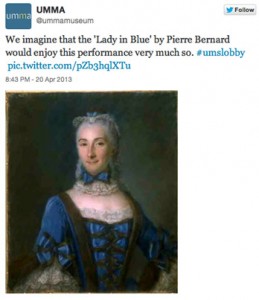University of Michigan Credit Union Endows New Arts Adventures Program
University of Michigan Credit Union Endows New Arts Adventures Program with $1.5 Million Gift to University Musical Society and University of Michigan Museum of Art
UMCU PROVIDES largest corporate gift to the arts in the Victors for Michigan Campaign

Photo: At a UMS School Day performance. By Peter Smith.
Ann Arbor, MI (September 27, 2016) — The University of Michigan Credit Union (UMCU) has invested $1.5 million to create the University of Michigan Credit Union Arts Adventures Program at the University Musical Society (UMS) and the University of Michigan Museum of Art (UMMA). The gift ensures that UMS and UMMA will provide thousands of Southeast Michigan community members and U-M students and faculty with extraordinary access to a diverse array of arts offerings including performances by world-renowned artists, hands-on art making workshops, and engaging events each year.
The donation is the largest corporate gift to the arts in the Victors for Michigan Campaign to date and will deeply impact both the community and campus—enabling compelling encounters with the arts for students and providing grants that extend the availability of arts programs to underserved communities. The UMCU Arts Adventures Program provides funding for these programs in perpetuity, while allowing the organizations to enhance and expand upon programs as needs evolve.

Joe Rosa, Tiffany Ford, and Ken Fischer. Photo by Jesse Meria.
UMCU CEO and President Tiffany Ford stated, “The University of Michigan Credit Union is proud to establish the first corporate endowment for UMS and UMMA, helping to ensure access to extraordinary arts experiences and exceptional learning opportunities for students and families for years to come. We know that involvement in the arts helps to develop important life skills such as creative thinking and the ability to work collaboratively, and we’re thrilled that we can help to foster these skills in young people by creating the UMCU Arts Adventures Program. ”
UMMA was recently recognized as the number one public university art museum in the country by Best College Reviews, and UMS was awarded the 2014 National Medal of Arts, the nation’s highest public arts honor. The UMCU Arts Adventures Program will solidify the University of Michigan’s standing as a world-class destination for the cultural and performing arts.
UMS President Kenneth C. Fischer noted, “We are thrilled and honored to have the University of Michigan Credit Union’s support as we work to enrich the lives of students, educators, and our community by connecting them with world-class artists in profound and engaging ways. Because of their support, UMS and UMMA can continue to contribute to the outstanding artistic and cultural tradition upheld by the University and our great city of Ann Arbor. ”
UMMA Director Joseph Rosa added, “The University of Michigan Credit Union’s Arts Adventures Program is a game-changer for UMMA. With this first corporate endowed gift to the Museum and UMS, UMCU distinguishes itself as a philanthropic leader committed to the power of arts experiences for students and families. We look forward to celebrating UMCU’s legacy in the arts long into the future.”
More about UMS/UMMA Programs supported by UMCU Arts Adventures

Photo: U-M Students at UMMA’s Artscapade! event. By Leisa Thompson Photography.
“I love the student tickets from UMS! Instead of paying to see one show per semester that I know I’ll like, the student tickets are so inexpensive that I can afford to see multiple diverse presentations. It’s really changed how I think about performance.” — Jocelyn Aptowitz, English and Performance Arts Management, Class of 2018
“As a student, UMS’s lower priced tickets are an opportunity for me to enjoy outstanding performances regularly. The Performances are a great way to take a break from the stressful environment of classes, and the lower prices make them super accessible.” — Hyelin Yang, Economics, Class of 2018
“Transportation and the cost of getting our students out [to Ann Arbor] to experience these wonderful performances at UMS can present a big issue. I’ve been coming for years myself, but to be able to get the kids here to Ann Arbor for some UMS performances is fantastic.” — Deanna Burrows, Cass Technical High School Orchestra Teacher
“UMMA’s Family Art Studio is a top notch experience. The leaders are engaging & knowledgeable. The art project is directed at all ages, the instructions are simple. So much room for open-ended creativity. For my kids, the bridge between looking at art in the museum and making their own is priceless.”
— Community member, Family Art Studio participant
“Student Late Night is a blast. It impresses U-M students who are already museum lovers and makes converts out of those who are skeptics. It exposes how UMMA can be a fun and relevant museum on campus.” — Rachel Bissonnette, History of Art, Class of 2016
About the organizations
About University of Michigan Credit Union
The University of Michigan Credit Union (UMCU) is a member owned, not-for-profit cooperative. Our purpose is to aMAIZE our members, community, and team by working together for our shared success.
UMCU is the only credit union headquartered in Ann Arbor, Michigan. When established in 1954, we were 12 members and $9.00 in assets. Today, UMCU has over 75,900 members and $700 million in assets and we continue to grow! With seven offices in Ann Arbor, a branch in Ypsilanti, a branch in Dearborn and three branches in Flint, UMCU is able to serve the financial needs of the University of Michigan and its surrounding communities.
About UMMA
Located at the heart of one of the world’s finest public research universities and housing a venerable, encyclopedic art collection of more than 21,000 objects, the University of Michigan Museum of Art (UMMA) seeks to transform individual and civic life by promoting the discovery, contemplation, and enjoyment of the art of our world. UMMA engages more than 245,000 visitors on site annually and a similar size global audience via exhibition tours, publications, and online tools. The Museum is always free and is fully accessible, fostering a climate of inclusion and participation. Recently ranked the number one public university art museum in the country by Best College Reviews, UMMA enables compelling encounters with art that ignite creativity and forge connections across diverse disciplines, geographies, and cultures.
About UMS
One of the oldest performing arts presenters in the country, UMS (also known as the University Musical Society) contributes to a vibrant cultural community by connecting audiences with performing artists from around the world in uncommon and engaging experiences. An integral part of the Ann Arbor community, UMS is an independent non-profit organization affiliated with the University of Michigan, presenting over 70 music, theater, and dance performances by professional touring artists each season, along with over 100 free educational activities. UMS is part of the University of Michigan’s “Victors for Michigan” campaign, reinforcing its commitment to bold artistic leadership, engaged learning through the arts, and access and inclusiveness. UMS was awarded the 2014 National Medal of Arts by President Obama.
Media Contacts and Photos
Mallory Shea, UMS Marketing & Media Relations Coordinator
734.647.4020 / mschirr@umich.edu
David Lawrence, UMMA Communications Manager
734.647.0524 / dlawr@umich.edu
Harriet Hughes, Community Relations Manager
734.662.8200 / harrieth@umcu.org
Explore: Connections Between UMS and U-M Museum of Art
Visual and performing arts have a close relationship. We asked our partners and friends at UMMA (U-M Museum of Art) to link performances on the UMS season with visual art works that are part of the museum’s permanent collection.
Related performance: Tanya Tagaq in concert with Nanook of the North
February 6, 2016
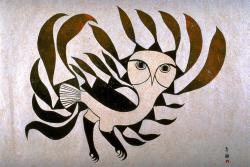 Artwork: Kenojuak Ashevak (Canadian, 1927-2013). Sun Owl, 1963. Stonecut print on paper. Gift of Mr. and Mrs. Eugene B. Power, 1964/2.103
Artwork: Kenojuak Ashevak (Canadian, 1927-2013). Sun Owl, 1963. Stonecut print on paper. Gift of Mr. and Mrs. Eugene B. Power, 1964/2.103
Like Tanya Tagaq, Kenojuak Ashevak was from Nunavut and her art was inspired by her Inuit experience. She often depicted animals from the Arctic such as this owl, but, also like Tagaq, she relies on her creativity and imagination. Ashevak explained that she drew as she thought, and so she produced spontaneous and improvisatory images.
Related performance: Camille A. Brown & Dancers: Black Girl — A Linguistic Play
February 13, 2016
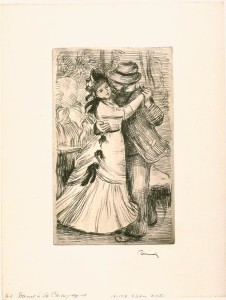 Artwork: Pierre Auguste Renoir (French, 1841-1919). Dance in the Country, c. 1890
Artwork: Pierre Auguste Renoir (French, 1841-1919). Dance in the Country, c. 1890
Soft-ground etching on paper. Museum Purchase, 1959/1.102
In Renoir’s beloved image of country dance we see an earlier century’s ritual of recreation. Although more restrained than contemporary dance, it represents social dance, one of the inspirations for choreographer Camille Brown’s work.
Related performance: Nufonia Must Fall
March 11-12, 2016
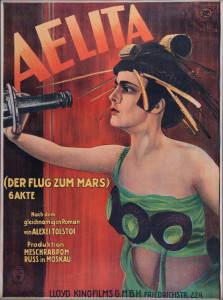 Artwork: P. Grasnick (n.d.). Aelita, 1924
Artwork: P. Grasnick (n.d.). Aelita, 1924
Lithograph on buff woven paper, laid down on canvas. Gift of James T. Van Loo, 2013/2.233
This poster is for the movie Aelita, which is often called the first Soviet science fiction film, created during the sometimes hope-filled beginnings of the Soviet Union. A mysterious radio message is beamed around the world, and among the engineers who receive it are Los, the hero of the film. Aelita is the daughter of Tuskub, the ruler of a totalitarian state on Mars. With a telescope, Aelita is able to watch Los who obsesses about being watched by her. He builds a spaceship and travels to Mars where he is thrown in prison, begins a proletarian uprising and experiences the confusion of reality and fantasy. While Nufonia Must Fall is no sci-fi film, it is based on a graphic novel of the same title, and viewers might find similarities between the genres.
Related performance: Gil Shaham Bach Six Solos
with original films by David Michalek
March 26, 2016
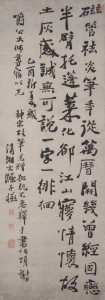 Artwork: Shitao (Shih-t’ao; Chinese, 1642-1707) Ode on a Wanli-era Imperial Brush Ink on paper, 1705. Museum purchase made possible by the Margaret Watson Parker Art Collection Fund, 1965/2.75.
Artwork: Shitao (Shih-t’ao; Chinese, 1642-1707) Ode on a Wanli-era Imperial Brush Ink on paper, 1705. Museum purchase made possible by the Margaret Watson Parker Art Collection Fund, 1965/2.75.
Taking an honored and beloved corpus of music from the past, Gil Shaham transforms its familiar beauty into a fresh, contemporary work of art. Similarly, Shitao receives a beautiful gift, a porcelain-handled calligraphy brush, from an earlier generation and uses it to write a poem and create a calligraphic masterpiece. The era and form are new but the inspiration is classic.
Related performance: Mariachi Vargas de Tecalitlán
April 1, 2016
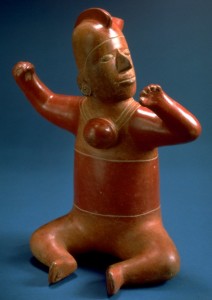 Artwork: Artist Unknown, Mexican, Colima Culture Seated Figure, c. 700 Terracotta Museum purchase made possible by a gift from Helmut Stern, 1983/1.355Artist Unknown, Mexican, Colima CultureSeated Figure, c. 700TerracottaMuseum purchase made possible by a gift from Helmut Stern, 1983/1.355
Artwork: Artist Unknown, Mexican, Colima Culture Seated Figure, c. 700 Terracotta Museum purchase made possible by a gift from Helmut Stern, 1983/1.355Artist Unknown, Mexican, Colima CultureSeated Figure, c. 700TerracottaMuseum purchase made possible by a gift from Helmut Stern, 1983/1.355
This lovely terracotta seated figure is an example of the native arts and culture celebrated by Mexican visual and musical artists. Mariachi Vargas de Tecalitlán transform a regional folk music into a world-class art form.
Related performance: Zafir: Musical Winds from North Africa to Andalucia
April 15, 2016
 Artwork: Artist Unknown, North Africa Qur’an manuscript leaf in Maghribi script, 13th century Ink, red ochre, paper Museum Purchase, 1959/1.146
Artwork: Artist Unknown, North Africa Qur’an manuscript leaf in Maghribi script, 13th century Ink, red ochre, paper Museum Purchase, 1959/1.146
For Muslims, Arabic script, representing the language of the Qur’an, is a thing of sublime beauty. This page is written in a script called Maghribi, a variation of the earlier, angular, Kufic script. Maghribi features sweeping curves that loop across the page and was developed in North Africa and Spain. This Qur’an page combines traditions of the Middle East, Spain and North Africa as does the music of Simon Shaheen and Zafir.
Interested in more? Visit the U-M Museum of Art today.
Join U-M Museum of Art in UMS Tweet Seats
The University of Michigan Museum of Art (UMMA) first participated in the UMS tweet seats program during the 2012-13 season, and the performance that I attended was Alison Balsom, Trumpet & the Scottish Ensemble (April 20th, 2013). As both a trumpet player and a social media enthusiast, I was very excited to attend the performance–and even more excited to be invited to live tweet the event with others that were interested in the interactive aspect of experiencing the performing arts.
As the music started, I began to think about the performance in more of a conceptual way–how could I articulate what I was seeing and hearing to someone wasn’t there? How could I describe the experience in words or pictures? Was there a way for me to educate or inspire people who were not present at the performance? As I was tweeting from the @ummamuseum handle, I was also thinking about ways that I could relate and connect the performance to the Museum. The Baroque period music that filled Hill Auditorium on that night provided a great opportunity to delve into the various Baroque period works found in UMMA’s encyclopedic collection. Some of the paintings really seemed to ‘come alive’ to the music as I was looking at them.
After participating in the tweet seats myself, I realized two things: 1) there is unlimited potential in pairing UMMA’s vast collection of over 19,000 works with the diverse line-up of world-class performing arts presented by UMS each year, and 2) this presents a great opportunity for UMMA and our students to help create a parallel narrative and to draw connections between visual art and performing art. This season, we will work with our student docents to prepare a visual narrative from UMMA’s collection prior to each of the UMS tweet seat shows. The students will then attend the shows and live-tweet the performances.
UMMA’s partnership with UMS seems very natural, specifically with the focus on dance performances during the 2013-2014 UMS season (look for an opening night Q&A and “You Can Dance” event accompanying each dance performance). You can watch for our blog posts (before) and tweets (during) the Hubbard Street Dance Chicago (9/27), Ballet Preljocaj (11/1) and Compagnie Käfig (2/14). We hope to highlight some interesting ways that our collection relates specifically to the dance performances that we will be tweeting about this season. See you at #UMSLobby!
Are you interested in giving tweet seats a try? Call our ticket office and mention “tweet seats” (along with the related performance) to order at 734-764-2538.
Robert Wilson: Video 50
Robert Wilson fans will have much to do in Ann Arbor this winter.
UMS is presenting preview performances of Einstein on the Beach, an opera by Robert Wilson and Philip Glass, January 20-22. Absolute Wilson, a film which chronicles the epic life, times, and creative genius of theater director Robert Wilson, will be screened on January 9. The film screening is free.
Photo: Robert Wilson. “Video 50,” 1978. Courtesy Electronic Arts Intermix (EAI), New York
In conjunction, UMMA’s Video 50 curates Robert Wilson’s “smaller-scale” experiments in video. Guest Curator Ruth Keffer describes the exhibit:
Video 50 consists of a randomly arranged set of 30-second “episodes”; counting occasional repeats and alternate versions, the 50 pieces of the title number nearly 100. Some of these episodes are static to the point of resembling still-lifes; others are self-contained vignettes that begin and end—or seem to end; any narrative resolution is teasingly withheld. With its use of early video techniques and the highly stylized, fashion-world look of its actors, Video 50 seems dated, but the way in which Wilson wields his domestic-gothic vocabulary is classic surrealism: everyday objects and settings made mysterious or comical or alien by their bizarre juxtaposition to one another, and by an equally nonsensical and cheerfully manipulative score of music and sound effects.
Read the full article in UMMA Magazine.
UMS on Film Series
Every summer, we come up with about three dozen companion-films to the UMS main-stage season. We’ve narrowed the list to five this year – two in the fall, and three in the winter. Each expands our understanding of artists and their cultures, and reveals emotions and ideas behind the creative process.
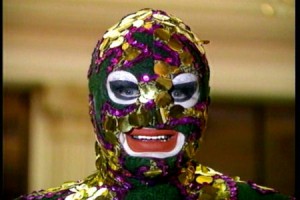 In the fall, the films highlight deep cultural expressions which grow from communities of shared heritage. In the winter, the films tie in with UMS’s PURE MICHIGAN RENEGADE series, which focuses on artistic innovation and experimentation. We’ve created a mini film festival, Pure Michigan Renegade on Film, to extend the renegade idea and explore other artists who have created new arts frontiers.
In the fall, the films highlight deep cultural expressions which grow from communities of shared heritage. In the winter, the films tie in with UMS’s PURE MICHIGAN RENEGADE series, which focuses on artistic innovation and experimentation. We’ve created a mini film festival, Pure Michigan Renegade on Film, to extend the renegade idea and explore other artists who have created new arts frontiers.
All films (except one! see below) are presented in the U-M Museum of Art Stern Auditorium (525 S. State Street) and are free and open to the public.
Pure Michigan Renegade on Film:
Helicopter String Quartet
(1995, Frank Sheffer, 81 min.)
Wednesday, March 7, 7:00 PM at the Michigan Theater (603 E. Liberty)
Tickets: $10 general admission; $7 students/seniors/UMS and Mich Theater members; $5 AAFF members
Purchase Tickets Here
The UMS Renegade on Film series culminates at the Michigan Theatre in collaboration with the Ann Arbor Film Festival (celebrating its 50th anniversary in March 2012!!). The curators at AAFF chose an amazing documentary that captures the renegade spirit and provides a fabulous lead-in to the San Francisco Symphony American Mavericks concerts. In one of the most certifiably eccentric musical events of the late 20th century, German composer Karlheinz Stockhausen designed and executed the performance: four string quartet members playing an original piece by Stockhausen in four separate helicopters, all flying simultaneously. The sound was then routed to a central location and mixed; the work premiered, in turn, at the 1995 Holland Festival. Frank Scheffer’s film Helicopter String Quartet depicts the behind-the-scenes preparations for this event; Scheffer also conducts and films an extended conversation with Stockhausen in which the creator discusses the conception and execution of his composition and then breaks it down analytically. Featuring music by Karlheinz Stockhausen, performed by the Arditti String Quartet. Co-presented with the Ann Arbor Film Festival in partnership with the Michigan Theater, in collaboration with the U-M Museum of Art.
Past Films…
Fauborg Tremé: The Untold Story of Black New Orleans
(2008, Dawn Logsdon, 69 min.)
Tuesday, October 11, 7 pm
Connected with UMS’s presentation of A Night in Tremé: the Musical Majesty of New Orleans, this documentary follows Lolis Eric Elie, a New Orleans newspaperman on a tour of his city, a tour that becomes a reflection on the relevance of history, folded into a love letter to the storied New Orleans neighborhood, Faubourg Tremé. Arguably the oldest black neighborhood in America and the birthplace of jazz, Faubourg Tremé was home to the largest community of free black people in the Deep South during slavery, and it was also a hotbed of political ferment. In Faubourg Tremé, black and white, free and enslaved, rich and poor co-habitated, collaborated, and clashed to create America’s first Civil Rights movement and a unique American culture. Wynton Marsalis is the executive producer of the film, which also features an original jazz score by Derrick Hodge. Introducing the film is U-M American Culture faculty member Bruce Conforth, whom some may remember from last season’s series on American Roots music.
AnDa Union: From the Steppes to the City (with director Q&A)
(2011, Sophie Lascelles and Tim Pearce)
Tuesday, November 8, 7 pm
Before AnDa Union takes the stage at Hill Auditorium, filmmakers Sophie Lascelles and Tim Pearce will screen their new documentary, which follows the group of 14 musicians who all hail from the Xilingol Grassland area of Inner Mongolia. The film premieres at the London Film Festival on October 13, and Ann Arbor will be one of the first to screen it after its debut. AnDa Union is part of a musical movement that is finding inspiration in old and forgotten folk music from the nomadic herdsman cultures of Inner and Outer Mongolia, drawing on a repertoire of music that all but disappeared during China’s recent tumultuous past. Tim and Sophie will be here in Ann Arbor to introduce the film, and take audience questions after the screening.
Absolute Wilson
(2006, Katharina Otto-Bernstein, 105 min.)
Tuesday, January 10, 7 pm
Absolute Wilson chronicles the epic life, times, and creative genius of theater director Robert Wilson. More than a biography, the film is an exhilarating exploration of the transformative power of creativity – and an inspiring tale of a boy who grew up as an outsider in the American South only to become a fearless artist with a profoundly original perspective on the world. The narrative reveals the deep connections between Wilson’s childhood experiences and the haunting beauty of his monumental works, which include the theatrical sensations “Deafman Glance,” “Einstein on the Beach” and “The CIVIL WarS.”
The Legend of Leigh Bowery (with director Q&A)
(2002, Charles Atlas, 60 min.)
Monday, February 13, 7 pm
Renegade filmmaker Charles Atlas (who worked extensively with the late choreographer Merce Cunningham) introduces his 2002 documentary The Legend of Leigh Bowery. Artist/designer/performer/provocateur Leigh Bowery designed costumes and performed with the enfant terrible of British dance Michael Clark, designed one-of-a-kind outrageous costumes and creations for himself, ran one of the most outrageous clubs of the 1980s London club scene (later immortalized in Boy George’s Broadway musical “Taboo”), and was the muse of the great British painter Lucian Freud. The film includes interviews with Damien Hirst, Bella Freud, Cerith Wyn Evans, Boy George, and his widow Nicola Bowery. Charles Atlas will participate in audience Q&A immediately following the film. This film is co-presented with the U-M Institute for the Humanities which hosts Charles Atlas’s video installation “Joints Array” in February 2012.
Performances for the Whole Family: Filling the master calendar with UMS events
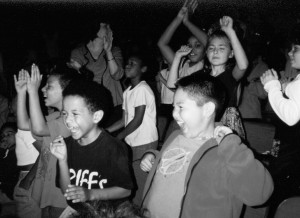 Part of the excitement of coming back to town at the end of summer is collecting all the calendars—Ann Arbor Public School’s holiday and half-day calendar, Huron High School’s band calendar, Clague Middle School’s orchestra calendar, King Elementary School’s PTO calendar, the crew calendar, the soccer calendar, the academic games calendar, University of Michigan’s football calendar, Washtenaw Community College Lifelong Learning calendar, Rec and Ed, Parks and Rec, etc.—whew!—and finally sitting down to map them all out onto one big master calendar in order to see what our year is going to look like.
Part of the excitement of coming back to town at the end of summer is collecting all the calendars—Ann Arbor Public School’s holiday and half-day calendar, Huron High School’s band calendar, Clague Middle School’s orchestra calendar, King Elementary School’s PTO calendar, the crew calendar, the soccer calendar, the academic games calendar, University of Michigan’s football calendar, Washtenaw Community College Lifelong Learning calendar, Rec and Ed, Parks and Rec, etc.—whew!—and finally sitting down to map them all out onto one big master calendar in order to see what our year is going to look like.
My favorite calendar to pore over with the kids is the one from University Musical Society (UMS).
This year, the University of Michigan Center for Chinese Studies is celebrating its 50th anniversary. As usual for an academic department, they have all sorts of lectures and films and special events and conferences planned. University of Michigan Museum of Art is supporting this celebration with a contemporary Chinese woodblock print exhibit. University Musical Society is supporting this celebration with an Asia performance series. I am excited.
When the UMS catalog arrives, the kids keep grabbing it away from one another. They dog-ear the pages that interest them. They recall other concerts and dance performances we have attended.
Little Brother is captivated by the photograph of the old woman and old man sitting in trashcans. What could that possibly be? (Gate Theatre of Dublin) How to explain Beckett’s “Endgame” and “Watt” to a seven year old?
Our pianist, Niu Niu, complains (again) that she likes playing piano but does not like watching piano, but when we begin discuss how the dazzling Yuja Wang recently rocked the Hollywood Bowl with her very short very tight very sexy orange dress, about which reviewer Mark Swed wrote: “Her dress Tuesday was so short and tight, that had there been any less of it, the Bowl might have been forced to restrict admission to any music lover under 18 not accompanied by an adult.” Oh, and her legendary speed, too. Now Niu Niu is convinced. Our first concert marked on the calendar.
Cloud Gate Dance Theatre of Taiwan is my choice. I have already heard many Taiwanese American friends discussing how the choreography is inspired by Chinese calligraphy and classical landscape painting. Local Chinese calligraphers will be demonstrating and displaying their work before the performance to connect these two artforms.
Hao Hao wants to go see AnDa Union from Inner Mongolia. I thought it was because her great-grandfather was born in Inner Mongolia, but really it is because she remembers the Mongolian throat singers we once heard perform at the Ann Arbor District Library.
M is intrigued by the Chamber Ensemble of the Shanghai Chinese Orchestra because she knows more about Chinese music than any of us, but the Ballet Preljocal looks amazing. An antithesis of Disney’s Snow White? It looks dark and grim and sexy and strange—irresistible for teenagers dressed all in black.
Now, big sigh, the tickets.
I was so grateful when UMS began their teen ticket program a few years ago, at last an affordable way to bring my teenagers to UMS programs. I was even more grateful when I was able to go with the children’s school field trips as a chaperone. This year, UMS is launching a new UMS “Kids Club” program for students in grades 3 to 12: “Two weeks before opening night, parents can purchase up to two kids’ tickets for $10 each with the purchase of an adult ticket for $20.”
Great! So now we can take the whole family.
VIDEO & CONTEST: What deal would you make with devil?
UMS is celebrating American roots this season by presenting and exploring uniquely American art forms like Jazz, Bluegrass, and the Blues. In anticipation of the Blues at the Crossroads concert on February 10, we’ve been working with the U-M Museum of Art to draw out some the connections between the American folk art on display at the museum and the American Roots Music artists on the 10/11 UMS season.
Former curator of the Rock & Roll Hall of Fame (and current UM Lecturer) Bruce Conforth joined curator (and PhD candidate) Kristine Ronan in the gallery to talk about how folk art and roots music are intertwined. Bruce and Kristine had a great conversation (which we’ve captured on video) – and we hope you’ll check out some of the music and art they talk about:
NOW FOR THE CONTEST! Legendary Blues musician Robert Johnson was rumored to have made a deal with the devil to receive his extraordinary guitar talents. Join our contest to win a pair of tickets to Blues at the Crossroads (February 10) or a tour CD and t-shirt by answering the question: what deal would you make with the devil? Leave your answer in the comments below and we’ll choose a winner at random (and be sure to sign in with facebook/twitter or leave us a valid email address so we can get in touch with you if you win!). Contest ends Tuesday, February 8 at 12 noon.
You can hear more from Bruce by joining his free American Roots/American Routes 101: The Blues workshop on Monday, February 7 at 7 pm at the Cobblestone Farm Barn. You can see all the artworks on display at UMMA through June 26.


